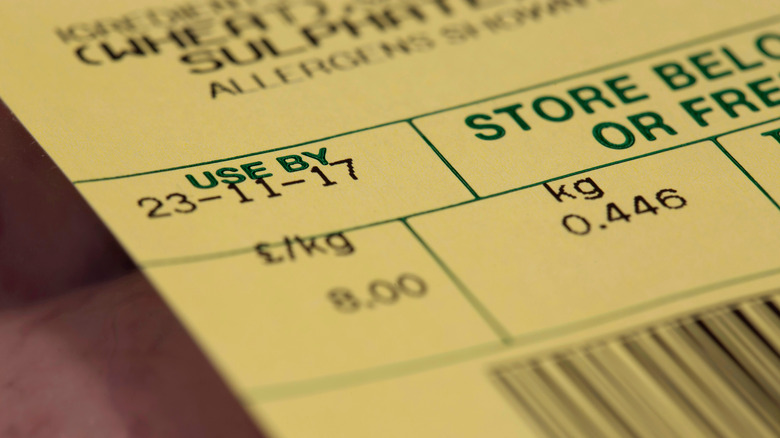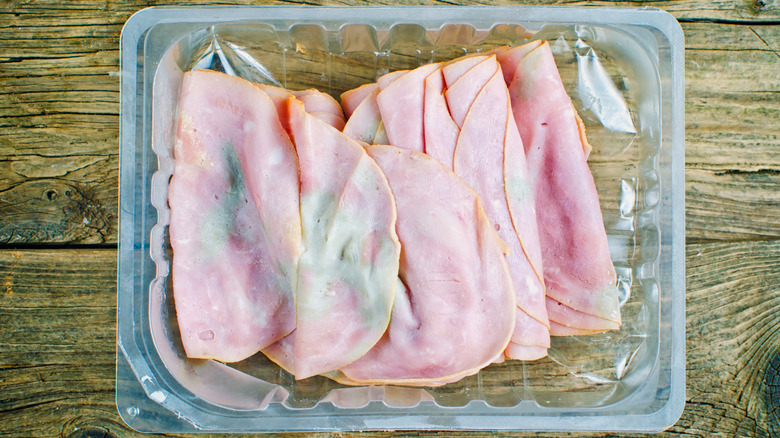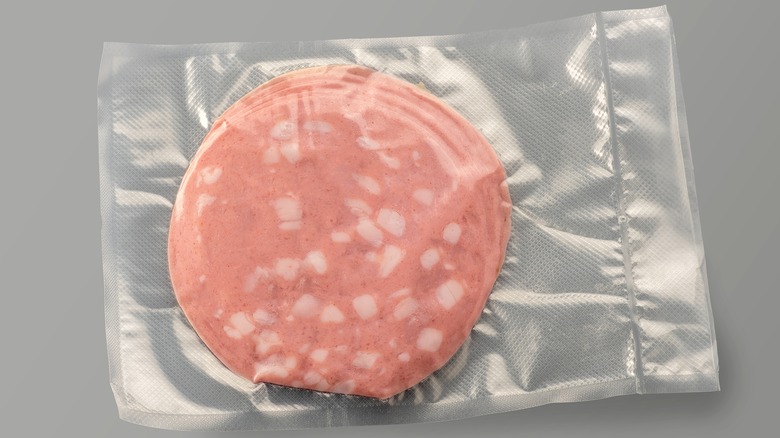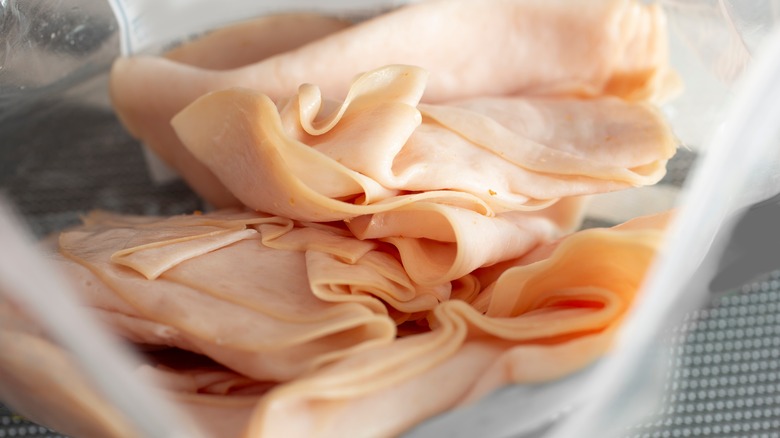The Last Day You Can Still Eat Lunch Meat After Opening
You probably have lunch meat in your refrigerator right now. It's a household staple for a reason. Cold cuts are tools of convenience, the key to following a delicious club sandwich recipe or Italian sub recipe. Many of us eat cold cuts on an almost daily basis. Unfortunately, deli meat is also one of the most common sources of food poisoning.
With how frequently we eat lunch meat, it seems like the kind of thing you ought to buy in bulk, so you can fuel yourself through a week of lunches at the least. It turns out that a week is pretty much the longest you can keep deli meat after opening it. USDA recommendations say that you can keep lunch meat in the refrigerator for three to five days after opening the package.
While that's a good baseline to set, it's difficult to give a firm limit on how long lunch meat lasts. It really depends on the type of meat and how it was originally packaged. Fermented and dried meats, such as salami, soppressata, and prosciutto, last longer than other meats, up to three weeks, according to the USDA. Freshly sliced deli meats also spoil more rapidly than packaged ones. Of course, all of these meats are likely to come with an expiration date but those can only tell you so much.
Expiration dates can be misleading
We tend to put a lot of faith in expiration dates to save us from the risk of food poisoning. Unfortunately, though, they aren't as reliable as you think they are. There are no government regulations regarding food expiration dates, so each manufacturer is free to set their own guidelines. Without guidelines and resources to clearly explain expiration dates, most of us have come to believe something totally untrue. You probably think that the expiration date on your lunch meat signifies when it will go bad, but that's not really the case.
Whether the date on your food says "best by," "sell by," or "use by," it isn't really about the product's shelf life. Those dates are merely an estimate of when the food will be at peak quality. When the expiration date passes, the food doesn't go bad right away. It stays edible for a few more days. Expiration labels and USDA guidelines err on the side of caution, which is generally a good thing. Among the ways to reduce food waste is knowing when your lunchmeat actually becomes unsafe to eat. though. The best way to determine when lunch meat has gone bad is to use your own judgment.
How to tell when lunch meat has gone bad
The USDA's three-to-five-days rule is a good guideline to start with but don't assume you need to pitch your meat on the sixth day. As previously mentioned, different types of meat have different shelf lives. As that five-day period comes to a close, give your lunch meat a close inspection. Your senses can tell you if it's actually going bad.
The visual cues of spoilage are pretty obvious. If you see any trace of mold or discoloration, don't eat that meat. However, you shouldn't worry about any rainbow spots you might see. While it may be a little off-putting, it's perfectly normal to see these. If rainbows are the only thing you see on the meat (and it passes the next couple of tests), it's safe to eat.
If the lunch meat looks okay, it's time to move on to the smell test. Sour or yeasty odors are a sure sign of spoilage. A good tip is to take a whiff of the meat as soon as you open the package, so you know what it smells like fresh. Once that aroma changes, it's time to get rid of the meat. Lastly, use touch to check for spoilage. As lunch meat goes bad, it becomes slimy, so you feel a wet surface, you're best off throwing the meat in the green waste (and washing your hands, of course).
The best lunch meat storage methods
To maximize the shelf life of your lunch meat, you need to store it properly. Put it in the refrigerator as soon as you get home from the store, and keep it there at all times unless you're using it. Deli meat should not be left at room temperature for longer than two hours, or it will warm up enough to host harmful bacteria. Make sure your refrigerator is below 40 degrees Fahrenheit to keep your meat within the optimal temperature range. Refrigerators are typically the coldest in the rear, so you want to store lunch meats and other highly perishable items as far back on the shelves as possible. If your refrigerator has a deli drawer, you can certainly store it there.
Lunch meat should ideally be kept in an airtight container. In most cases, you can simply store it in its packaging. Commercial packaging is designed to protect the meat from bacteria. However, if you buy freshly sliced lunch meat from the deli, it will probably come wrapped in waxed paper, and you'll want to transfer it to another container. A vacuum-sealed container or airtight, resealable plastic storage bag should do the trick.
Can you freeze lunch meat?
If bought more cold cuts from the deli than you can eat in a week, you can fortunately freeze lunch meat to extend its life. Deli meat can last up to two months in the freezer, though there's a chance it could get freezer burn the longer it's in there. To defrost the lunch meat, simply place it in the refrigerator and wait. Don't attempt to microwave deli meat, as you don't want to accidentally cook it. As you would with meat that's been in your fridge for a while, inspect thawed deli meat to make sure it's safe to consume.




